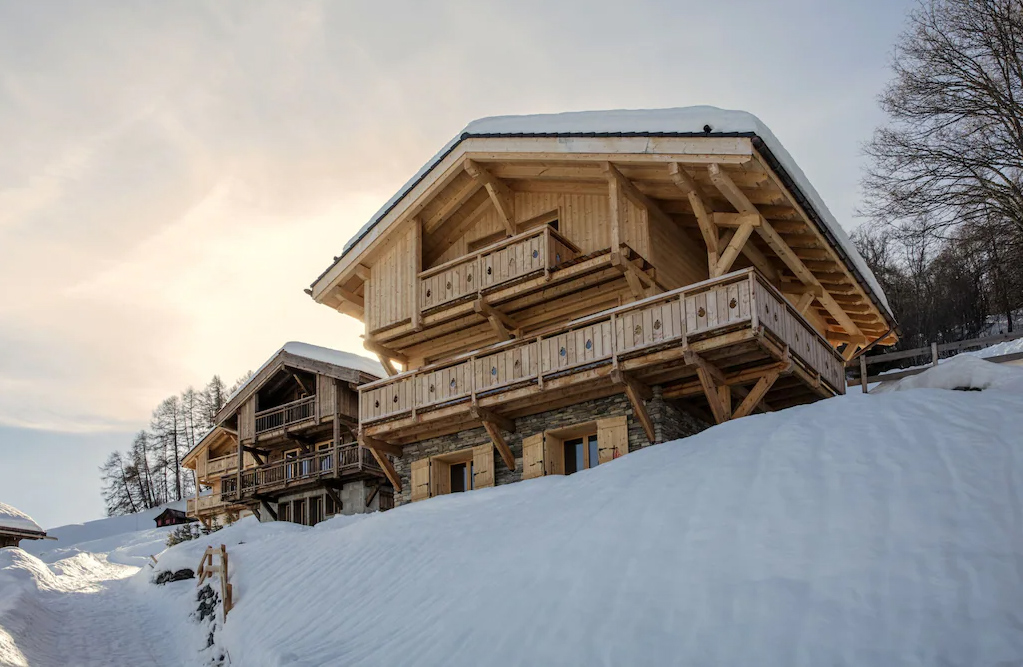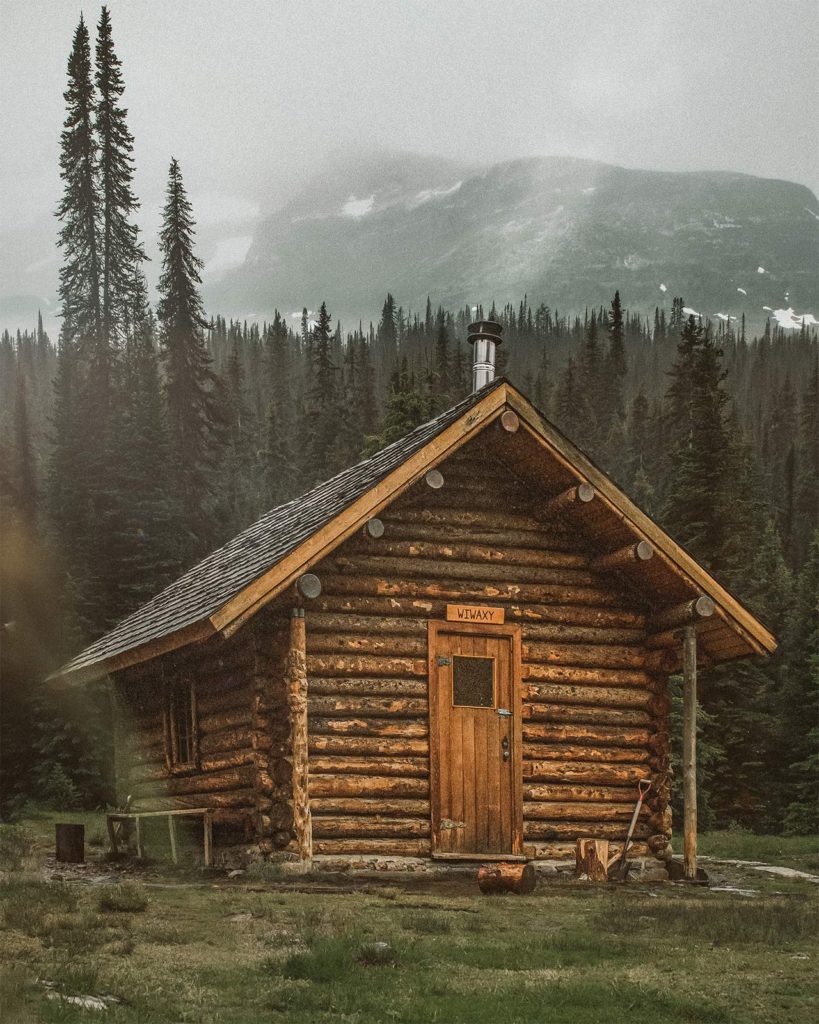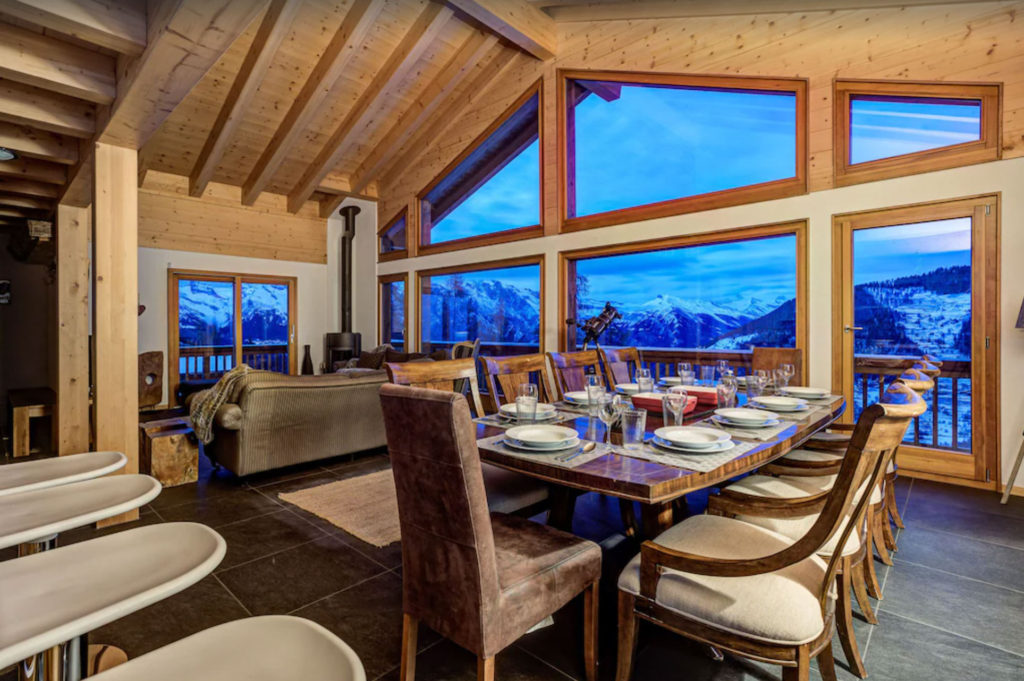
As you’re scouring AirBNB and VRBO looking for your next mountain getaway, you may notice yourself choosing between the type of home to stay at. Both platforms offer filters for property type, two of those choices being “cabin” and “chalet.” So, what’s the difference, and which one should you pick? Cabin vs. Chalet:
The difference between a cabin and a chalet is that a cabin has historically been identified as a small and simple structure made from logs. The definition of the cabin has evolved over time and will be discussed in greater detail, but the chalet has a specific identifying characteristic – namely, its long, sloping roofline and widely overhanging eaves. Chalets are often wood structures as well, though they often feature wood shingles and wood siding rather than log exteriors.
The chalet design is intentional and first served functional purposes rather than merely aesthetic appeal. Below, I’ll discuss cabins vs. chalets in greater depth and identify the considerations to take into account when deciding between buying or renting a cabin or chalet.
Characteristics of a Cabin
 Having said to originate from Eastern Europe, cabins have been typically built from logs for decades and are usually used as primitive shelter and mountain dwellings. Historically, cabins have been modest in nature and have been affiliated with rural America in modern times.
Having said to originate from Eastern Europe, cabins have been typically built from logs for decades and are usually used as primitive shelter and mountain dwellings. Historically, cabins have been modest in nature and have been affiliated with rural America in modern times.
Traditional cabins were built with minimal amenities, often as one-room structures. However, over the course of time, the definition of a cabin has broadened, and the architectural styles of cabins have evolved.
While it’s not accurate in a historical sense, today in the U.S., the term “cabin” is colloquially used as a catchall for different types of wooden/log structures. Some would even look at chalets as a type of cabin, though not all cabins would be chalets.
Architectural designs have veered off from the classic log look and feel. Cabins are no longer confined to small structures but are often large, family vacation homes. Transformed from the early associations with basic shelter, cabins have also become known as highly-amenitized second homes and symbols of wealth featuring pool tables, large decks, and hot tubs.
The materials used to build cabins have also evolved from logs to wood siding, stone, and other materials. The changes to the modern definition of a cabin have changed more in cabins vs. chalets. The wide range of structures we call cabins have even grown to include metal shipping container homes, as long as they’re situated in nature. Chalets on the other hand have maintained the same definition over the years through its distinct characteristics we’ll discuss in greater detail below.
How Log Cabins are Built
Historically, log cabins were built with only one room. This is because they were temporary and simple structures meant to house people when they first arrived in an area. Basic round logs from pine and spruce trees were used, and it’s speculated that early settlers stacked tree trunks on top of each other before the building process became more complicated with interlocking corners that are created by making cuts (notches) in the ends of the logs.
The notched corners intentionally created 1-2” gaps between the logs to allow for the wood to expand and contract. The gaps in the logs needed to be filled to insulate the cabin and prevent moisture and pests from entering the cabins through a process called chinking.
Mud, moss, clay and sand were traditionally used for chinking to fill these gaps in the logs. Sealants and mortars were then used in a process called daubing to prevent the wood and chinking from rotting and deteriorating.
Today, chinking is a process that’s still used, though stronger and more insulating materials are used including cement and acrylic mixtures.
Characteristics of a Chalet
Unlike cabins, chalets are more spacious due to their vaulted ceilings. They are made from wood and have a sloping roof with eaves that are long. Chalets are often referred to as Swiss chalets because they originate in the Swiss Alps where they were often used as farmhouses.
The roof of cabins vs. chalets is the biggest differentiating factor. Chalets are usually built with short walls and large roofs. They offer a triangular profile and often feature a paneled glass front elevation. Between the openness of the front windows, and a large vaulted ceiling, chalets often feel quite expansive, even when their footprint is small.

How Chalets are Built
Chalets are built from timber that is cut into multiple heavy and thick planks. They are then framed together, similarly to a log house. Chalets are made of natural materials because they were built from and made to fit into their natural surroundings.
Another cabin vs. chalet distinction is that cabins were historically one story, while chalets are almost always two-stories. Despite being two-level homes, the sidewalls of chalets are usually built short, with the upper floors built to project over the bottom floors. They also feature large windows intended to brighten the interior and provide the breathtaking Nordic views. Chalets are also known to showcase ornate, wood-carved railings that line their spacious balconies.
Chalet roofs are often covered with wooden shingles and are designed to support the weight of heavy snowfall in the Scandinavian countries where the style originated.
The long eaves were designed as a functional consideration to keep snow, snow melt, and rain away from the home. This design is successful at preventing water intrusions as well as keeping stress away from the walls of the home.
Heavy snowfall piling up from the roof down to the sides of the home can cause bowing and structural damage to the home. However, the long roof overhangs of chalets help to keep snow buildup away from the home. In heavy snowfall areas, this is one of the foremost benefits of chalets vs. cabins.
Log Cabin vs. Chalet: Choosing Your Winter Vacation
The definitions of cabins vs. chalets have transformed over time. In earlier times, cabins tended to be primitive, but in this day and age, cabins and chalets both offer beautiful styles of architecture. More importantly they both tend to be situated in forested or mountainous regions, so they both offer unique opportunities to get away and spend time in natural settings.
However, one thing that is probably evident is that they’re often misidentified. So if you’re deciding between selecting chalet vs. cabin when filtering your AirBNB search, select both. Chances are, there will be chalets listed as cabins and cabins listed as chalets.
They’ll both provide you an opportunity to experience a different way of living than most of us do on a day-to-day basis. I love the architectural nuance of the two styles, but I also love being in the mountains. When perusing AirBNB for a vacation home, I wouldn’t focus on cabins vs. chalets; I’d focus on booking my trip 🙂